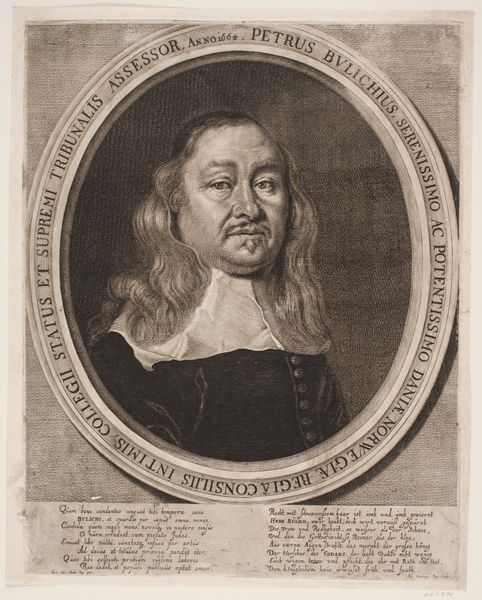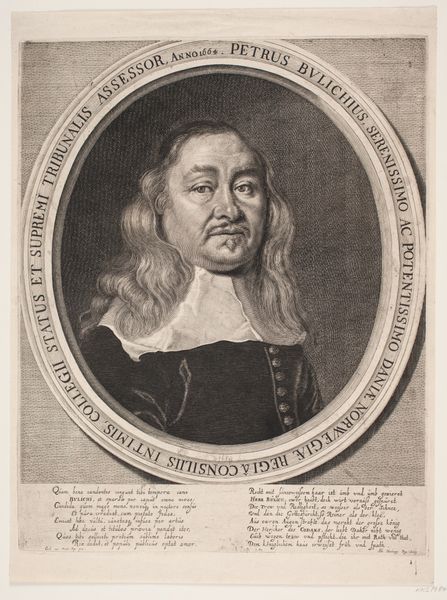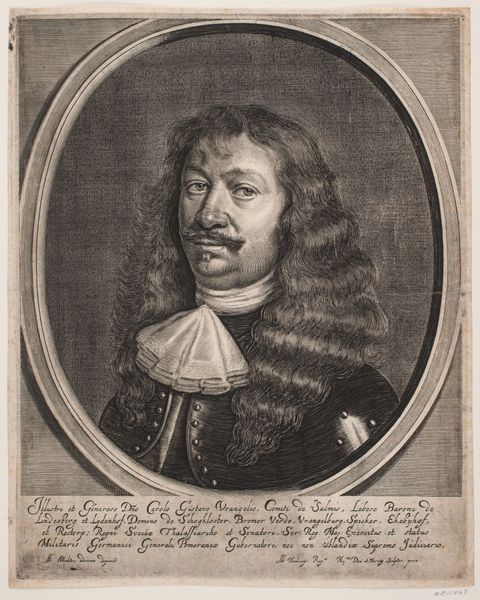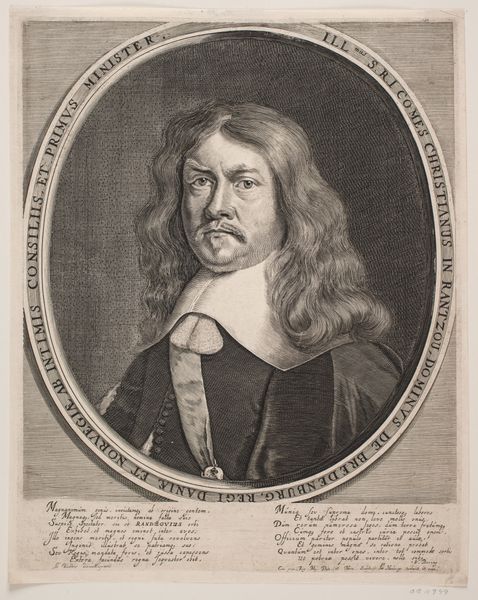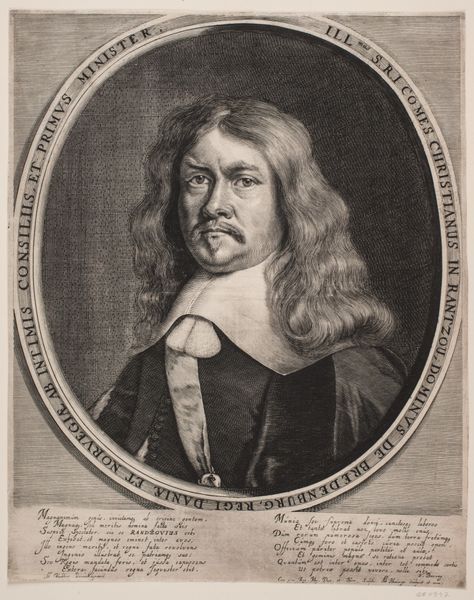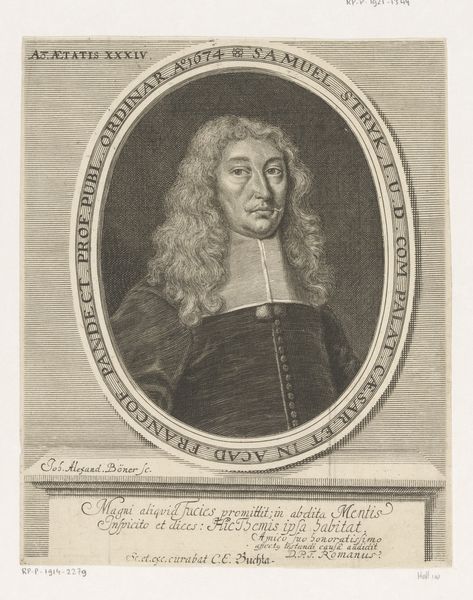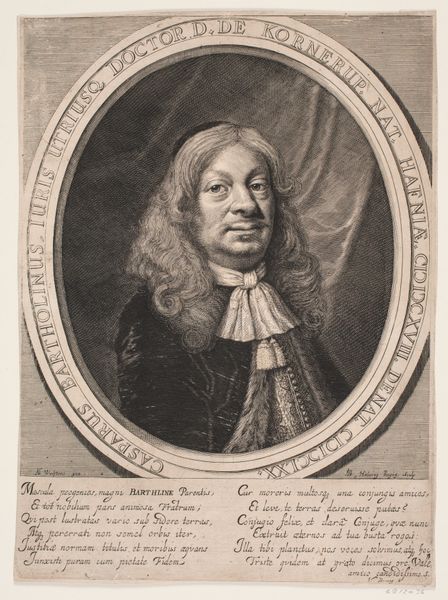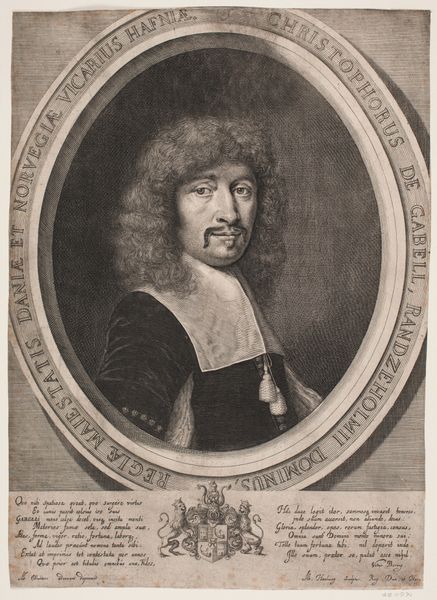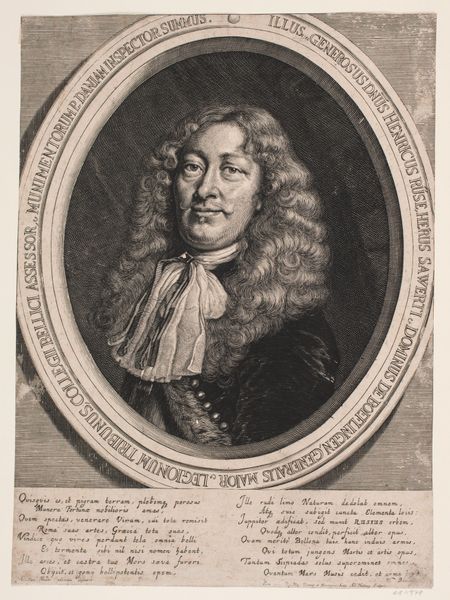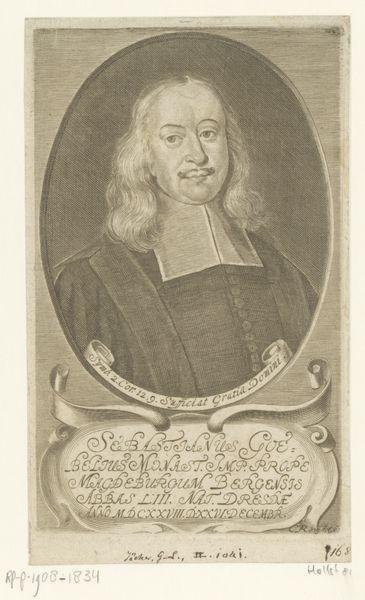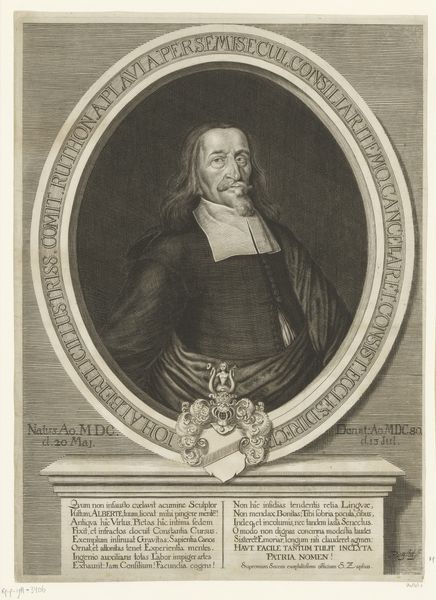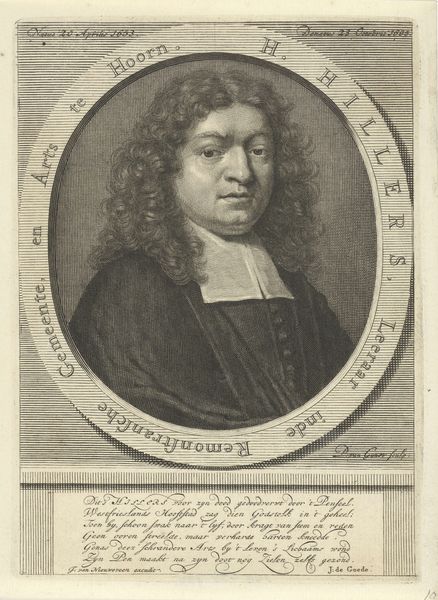
print, engraving
#
portrait
#
baroque
# print
#
engraving
Dimensions: 345 mm (height) x 246 mm (width) (plademaal)
Curator: Editor: This is "Erik Krag," an engraving by Albert Haelwegh, dating back to sometime between 1669 and 1672. It's fascinating to see how detailed the face and hair are rendered. I find it intriguing that the subject is framed by text within an oval. How do you interpret this work from a formal perspective? Curator: Indeed. The engraving medium allows for a striking interplay of light and shadow, meticulously delineating Krag's features and the textures of his garments. Note how the artist uses the oval frame, not merely as a border, but as an integral element which introduces semiotic dimensions, contrasting with the rigid lines of the text, and framing Krag's visage as an emblem of nobility. How do the formal elements guide your eye? Editor: The oval definitely contains and focuses the gaze. The repetition of curvilinear forms – the hair, the frame itself - gives it a certain harmony, although the density of the engraved lines does make it feel a bit severe, especially compared to contemporary portraiture. I also can’t read Latin, so I’m unsure what to make of the frame’s lettering. Curator: Precisely. The density is part of the aesthetic, it establishes visual weight which contrasts with Krag's visage. The text in the border, its very presence, underscores the inscription as a component within the composition. What philosophical connections might be considered between medium, language, and the portrayed person? Editor: I hadn't considered that! I suppose it emphasizes how Krag's identity is constructed, almost literally, through visual representation and written language, reinforcing the notion of portraiture as a formal exercise and power, instead of solely relying on likeness. I am beginning to appreciate the artist’s clever fusion of word and image. Thank you! Curator: The artwork indeed shows us the intricate relationship between text and image, where neither element overpowers the other, but instead co-exists to enhance its symbolic expression. The artist compels the viewer into reflecting on not only what it is they observe, but *how* they do so.
Comments
No comments
Be the first to comment and join the conversation on the ultimate creative platform.

